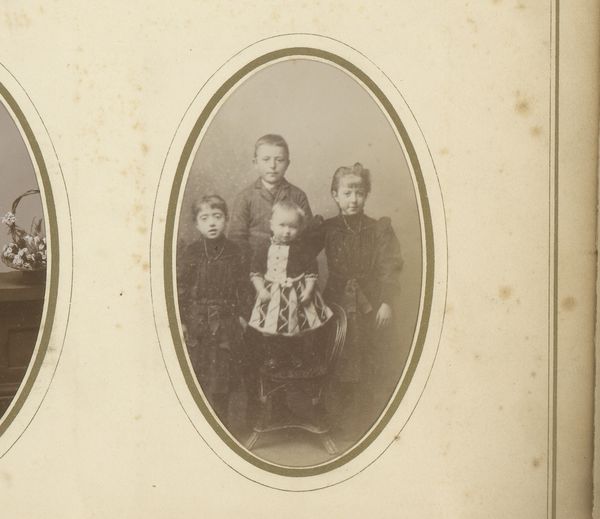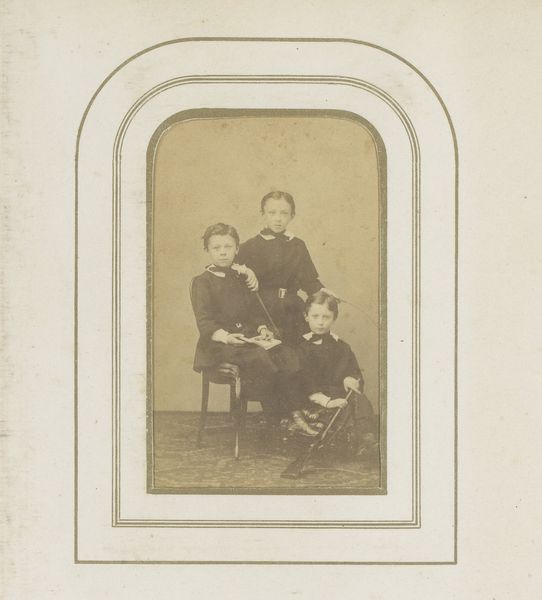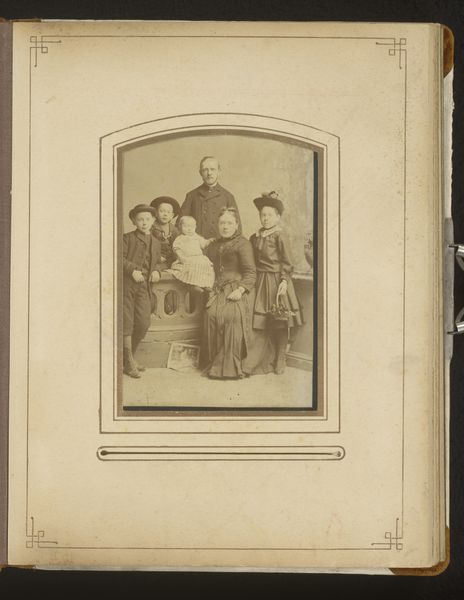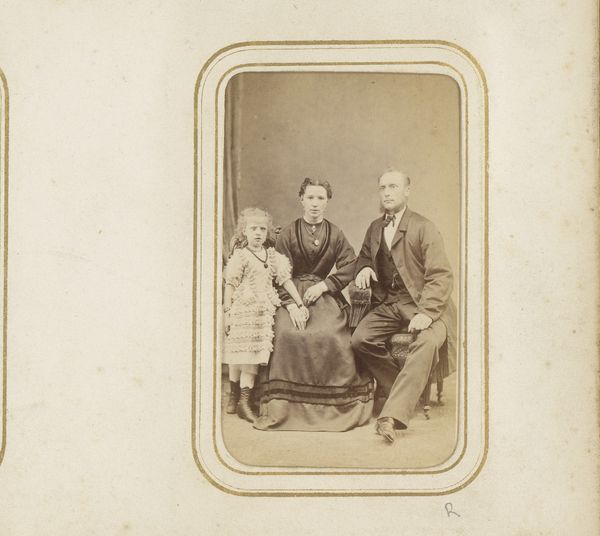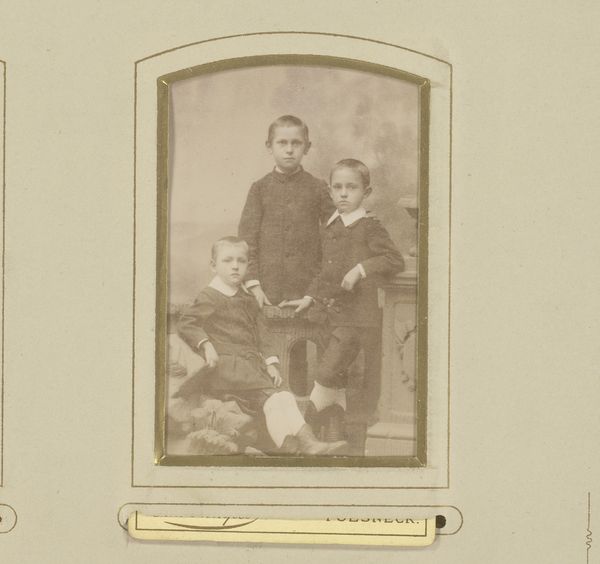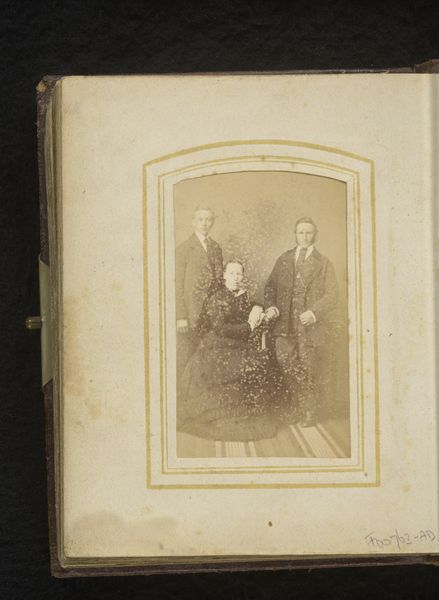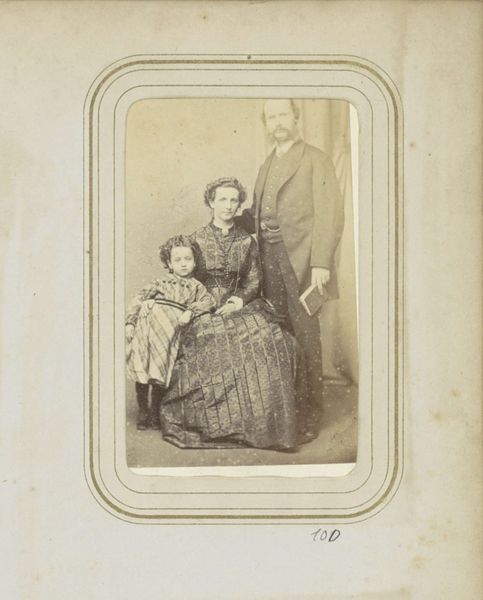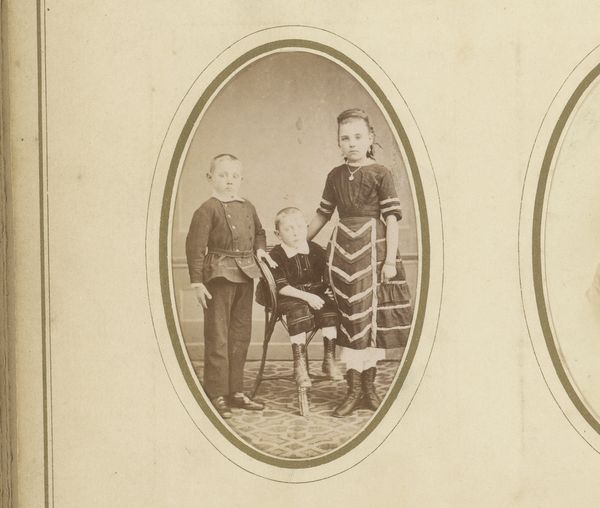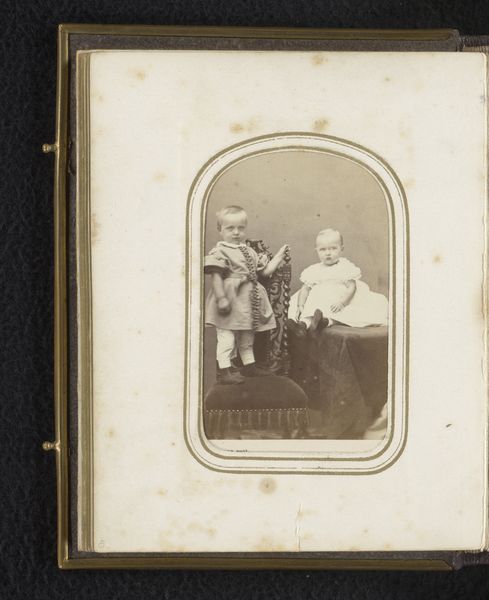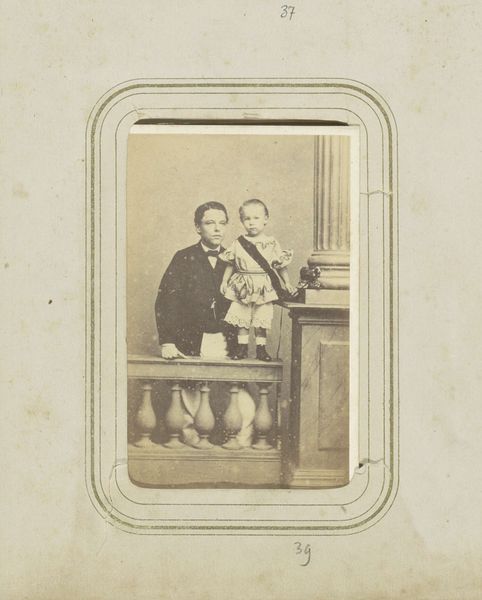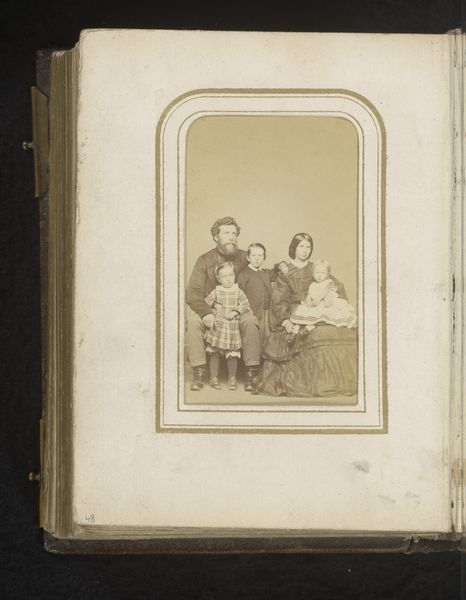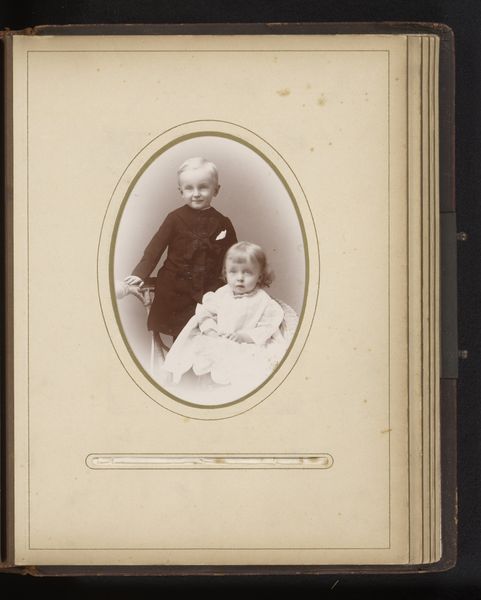
photography
#
portrait
#
pictorialism
#
photography
#
genre-painting
#
realism
Dimensions: height 85 mm, width 52 mm
Copyright: Rijks Museum: Open Domain
Curator: Welcome. Today, we're examining a piece titled "Portret van een gezin met drie kinderen" by Jan Goedeljee, likely created between 1880 and 1883. It’s a fascinating example of photographic portraiture from the period. Editor: My first impression is one of constrained stillness. The monochromatic palette contributes to a feeling of gravity, almost austerity, which seems to envelop the family grouping. Curator: Absolutely. The socio-economic context of the time is crucial. Consider the burgeoning middle class in the Netherlands; portrait photography was becoming an accessible symbol of status and respectability. These studio portraits presented carefully constructed images, reinforcing ideals of family and order. Editor: And within that constructed order, look at the formal arrangement. The father standing, slightly behind, the mother seated centrally holding the baby, flanked by the older children. The composition is remarkably symmetrical, echoing the architecture within the image, like a classical painting, wouldn't you say? Curator: Precisely, it's a visual echo of contemporary social structures, and it illustrates a key transitional point in how bourgeois life and family relationships were being defined and presented in the public sphere. Note too, that photography also became part of the project of record keeping for those in power. This sort of photographic data became crucial, especially when considering documentation. Editor: Yes, that tonal range works to underscore these values and enhance the structural geometry, too. The composition conveys more than what the eye is really 'seeing'. It seems that their expressions and arrangement really seem to formal and reserved as if attempting to contain any movement. The focus seems rather constrained to only this moment, not of their everyday lives. Curator: Agreed. It's also fascinating to consider how this piece reflects on gender roles within society at the time. The father looms while the mother literally anchors the portrait while she's seated. Each is subtly communicating that gendered difference in how social and labor norms dictated that their class could thrive. Editor: Considering that it's encased in such decorative surroundings also, does add another level to this rather controlled family scenario, I'm finding myself more intrigued by how stillness evokes deeper questions than how a candid camera does. Curator: It really underscores how powerful photography, at that time, really began to impact social standards for families, classes, and how cultural expectations would be documented forever. Editor: Indeed, through its formal rigidity, "Portret van een gezin met drie kinderen," really illustrates more than what the family embodies, but that there are levels of society to be unraveled by understanding its structure.
Comments
No comments
Be the first to comment and join the conversation on the ultimate creative platform.
